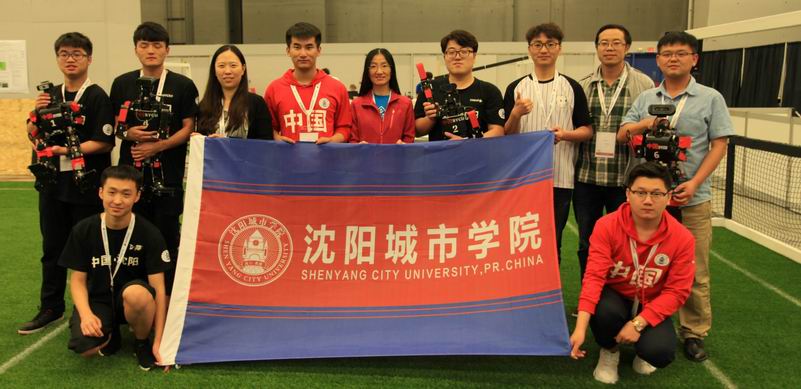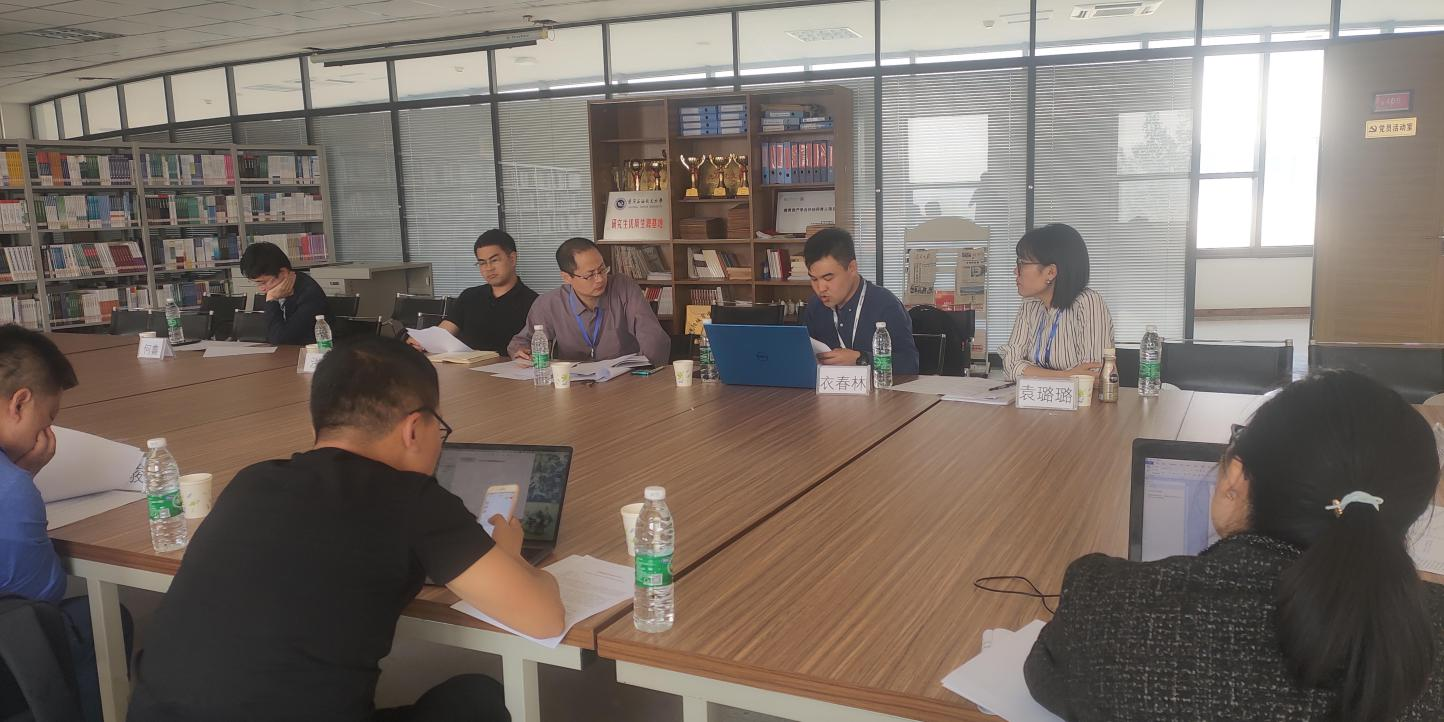SYCU-Legendary Team
作者:赵新来源:时间:2021-05-16

Being one of the ultimate research goals in robotics, humanoid has become the hot focus and preferred platform for artificial intelligent application such as the RoboCup competition where a team consisting of fully autonomous humanoid robot soccer players is expected to beat the champion of the most recent World Cup under FIFA official rules by the mid-21st century. Although many distinguished humanoid robots have been reported consecutively including Atlas, Hubo, HRP series, RoboCup competition requires the humanoid robot playing soccer game similar to human being especially from the point of view of the autonomous capability, the compliance with rules, the sensing system configuration as well as the whole-body structure. Hence many research teams have introduced their humanoids taking part in RoboCup annually. Coming from Shenyang City in Liaoning Province of China, SYCU-Legendary is a competitive team for 2019 RoboCup humanoid league since we won the champion on 2018 RoboCup China Open. Our team has been preparing robots in accordance with the requirements of the Robocup competition since 2016 when we started to contract and learn from the teams from Zhejiang University, Tsinghua University, Southeast University and Beijing Information Technology University. During 2018 with the help of Rhoban team we improved the robot significantly in view of mechanical optimal design, electrical system design, sensor configuration, software architecture design plus real-world realization. All members of SYCU-Legendary are familiar with the RoboCup rules and often discuss the development trend of the rules with the peers. We have published a paper on the international journal “Artificial Intelligence and Robotics Research” where the key technologies of humanoid robot were discussed including simultaneous localization and map construction (SLAM), optimization design and simulation, footprint planning and modeling, stability control with application, plus target recognition and tracking. In view of our research achievements, Shenyang Science and Technology Bureau ascertained our laboratory as the key laboratory in November 2017. Then we applied and gained a new scientific project that is High-level Innovation Talent Project ‘AI education resolution based on humanoid robot’ in 2018.

Mechanical Design of SYCU-Legendary Robot
In accordance to RoboCup requirements, SYCU-legendary robot has two legs, two arms, one body and one head. Except for the Servos, most structural parts of the robot are made of aluminum alloy while the head shell and some slight stress parts adopts 3D printed ABS material. The firmware of the robot is designed through SolidWorks platform under Simulation environment where the finite element analysis (FEA) method is adopted to design each component optimally by von Mises yield criterion toward the target of making the robot as light and flexible as possible with enough strength. In order to let the robot walk on 3cm height artificial grass ground, four anti-slip protruding parts are equipped at the corners under each foot of the robot to provide enough supporting force, which has been proved to work well. Servo is the most important mechanical driving part of the robot, so Dynamixel products of MX-106T and MX-64AT are selected after ADAMS dynamic analysis since they are well-designed for composition of humanoid. Each robot was driven by 20 servos: two for the head, three for each arm and six for each leg that ensure the robot acts flexible without hinder which is undoubtedly crucial for football player. We will continue to improve the performance of the robot while reduce its cost. We believe RoboCup competition is the best opportunity for us to learn from other teams who we expect to share our technique with.
Electrical Design of SYCU-Legendary robot
Sensor Configuration
As for the humanoid soccer robots designed to participate in RoboCup competition, their sensors is required to be equivalent in human senses so as to make an unbiased equipment configuration between robots and man-players, camera becomes the most important external sensor for the robot where the IMU sensor containing gyroscope and accelerometer is usually fixed as internal sensors that helps the robot fulfilling self-localization.
Last year we selected Logitech C930e WEBCAMI as image sensor. In order to improve the picture collection effect this year, we substitute it by industrial level camera Point Grey which combines highly sensitive sensors, industry-leading affordability, and a host of unique features for uncompromising value. Every camera model comes packed with functionality designed to maximize performance and reliability, including a 16 MByte frame buffer; LED status indicators; and an on-camera image processing pipeline that provides color interpolation, gamma, and lookup table functionality. The Point Grey camera weighs ony 36 grams, measures 29 x 29 x 30mm uses 2 watts of power and is available supporting USB3 Vision or GigE Vision with Power over Ethernet so that it is desirable for robot vision system.
Last year we used expensive ADIS 16405 as IMU with the purpose of accuracy measurement on angular velocity for robot azimuth calculation. This year we improved the localization algorithm so that we change it to a low-cost and smaller piece of circuit named GY85, which outputs rough data indicating the robot’s state that is compensated to an accurate description through visional information.
This year we added four pieces of force sensor on each foot so as to keep the robot stable during movement.
Electrical System Configuration
Elaborate design of the electrical system is an essential guarantee for the normal work of robots. With the help of Rhoban team, we designed and developed an electrical control system which is composed of an up-level computer, a low-level controller and a power supply board. The lower controller is designed by integration of three embedded microcontrollers driving different servo buses of servos and an IMU sensor while the camera is connected to up-level computer through USB port. Such simply design ensure effective utilization of the interior space of the robot. Apart from transferring power from the battery to up-level computer and low-level controller, the power supply board acts as a hot plug switch that ensures uninterruptible power supply if the battery needs to be changed when the robot are working.
Software Work of SYCU-Legendary
Robot playing football on the field is highly complex intelligent system that requires intact collection, timely delivery and effective usage of information. We adopted some software modules developed by Rhoban team including RhIO system, vision system, localization design, motion design, etc. Therefore the robot performs well during test. Concretely, Robot gait model adopts the D-H kinematics representation method to establish the mathematical expression of the robot’s gait and solves it on basis of the sensor data. The robot self-positioning model is built by employing particle filter (PF) algorithm. In detail, a set of weighted particles are generated to indicate the probability of the robot being on certain position, expressed by posteriori probability density function. The probability of every weighted particle is calculated iteratively based on the value of the observation model of the robot. After recursive and iterative calculation, the final collection of particles with largest weight represents the most probable position of the robot.
The robot’s visual recognition model identifies the field soccer, goal, penalty point, opponents and partner, while marking their position and distance. However, the existing self-positioning model only use the information of goal which is sometimes incorrect so that makes the robot lost itself. Therefore we develop a penalty point detection model that provides more useful information for self-positioning.
We have made many changes on the overall structure of the robot, leading it different to the prior ones, especially for practical operation. By overall consideration we solve the problems through some software adjustment such as modification of the robot action when changing battery. Before software adjustment, the battery room cover cannot open thoroughly when the robot is working because of the hinder of elbow joint. Then a new instruction can be send to the robot to lift its arm from sideway to let the cover open with a proper angle.
Publications
[1] Fenghua Wu, Tianyou Chai. Soft sensing method for magnetic tube recovery ratio via fuzzy systems and neural networks[J]. Neurocomputing, Volume 73, Issues 13-15, Pages 2489-2497.( SCI:000281612300022)
[2] Fenghua Wu, Tianyou Chai, Wen Yu. Fuzzy mechanistic model with neural compensation for Estimation of shaft furnace's product quality. IFAC Proceedings Volumes, Volume 41, Issue 2, 2008, Pages 7040-7045.( EI: 20094012355149)
[3]Tianyou Chai, Fenghua Wu, Jinliang Ding, Chunyi Su. Intelligent work-situation fault diagnosis and fault-tolerant system for the shaft-furnace roasting process. PROCEEDINGS OF THE INSTITUTION OF MECHANICAL ENGINEERS PART I-JOURNAL OF SYSTEMS AND CONTROL ENGINEERING, 221 (I6): 843-855 SEP 2007.(SCI: 000249896800004)
[4]Tianyou Chai, Jinliang Ding, Fenghua Wu. Hybrid intelligent control for optimal operation of shaft furnace roasting process[J]. Control Engineering Practice, Volume 19, Issue 3, Pages 264-275. (SCI: 000288819000006)
[5]Tianyou Chai, Jinliang Ding, Fenghua Wu. Hybrid Intelligent Control for Optimal Operation of Shaft Furnace Process. IFAC Proceedings Volumes, Volume 41, Issue 2, 2008, Pages 1988-1995. (EI: 20094012355260)
[6]Xianxi Luo, Mingzhe Yuan, Hong Wang, Yang Jia, Fenghua Wu. On Steam Pipe Network Modeling and Flow Rate Calculation[J]. Procedia Engineering, Volume 29, 2012, Pages 1897-1903.(EI: 20121214882880)
[7]FenghuaWu, Heng Yue and Tianyou Chai. Shaft furnace roasting process product monitoring system [J]. Journal of Northeast University ( Natural Science Edition ),2007,(07):913-916. (EI: 20073210754500)
[8]FenghuaWu, Jinliang Ding, Heng Yue and Tianyou Chai. Intelligent fault diagnosis system for shaft furnace roasting process [J]. Journal of nanjing university of aeronautics and astronautics, 2006, (S1):91-94.( EI: 20064410214531)
[9]Wu Fenghua, Yuan Mingzhe, Yu Haibin, Li Haiying. Design of High Precision and Energy Saving Water-cooling Unit Based on Advanced Control. [C] EIEE2012,Hubei Wuhan,2012, 06.(ISTP:000310490800005)
[10] Feng-hua WU, Lian-de LI, Cheng-ye WANG, Xin JIN, Hao WANG, Zhe-hai YANG, Jing-yao YIN and Yu-ping ZHANG. Design and Development of Autonomous Soccer Humanoid Robot CU-legendary. 2018 Global Conference on Robotics, Artificial Intelligence and Engineering Technology(RAET2018). (Accepted).
[11]Fenghua Wu, Liande Li, Hao Wang, Jingyao Yin, Zhehai Yang, Xin Jin, Chengye Wang and Yuping Zhang. Robot Subject Establishment through Popularity, Scholar, Research and Employer [J]. Research and Exploration in Laboratory (Core journal, Accepted).
[12] Fenghua Wu, Liande Li, Hao Wang, Yueyong Wang, Jiao Jiang and Si Chen. Research on Key Technologies of Humanoid Robot [J]. Artificial Intelligence and Robotics Research, 2017, 06 (03): 97-105.
[13] Wu Fenghua, Wei An and He Falin. Research on Whole Process Quality Management of Photovoltaic Power Station [J]. energy conservation, 2017,36(06):4-7+2.
[14] Wu Fenghua et al. Investigation on Actions about Reform for Supply Side of High Education [C]. Liaoning Higher Education Association. 2016,8.
[15] Fenghua Wu, Defu Wang Chuanxian Jiang, Rongju Lv and Yangxian Li. Research on Precision Algorithm of Humidity Measurement by Dry - wet Bulb Method [J]. Equipment Environmental Engineering, 2009, 6(05):81-83+89.
[16] Shuangjiu Liu, Liguo Ren, Yuwan Li and Fenghua Wu. Research on Application Scheme of Frequency Conversion Energy Saving Technology in Alumina Plant [J]. Control Engineering, 2010, (S3):159-161+175.
[17] Fenghua Wu, Kang Yang, Yanhui Wang, Yunhong Gao, Liqiu Liu, Zhihua Qiao and Hong Guo. Extraction of Phase Velocity in Oil Three-phase Flow Detection by Capacitance Method [J]. Journal of Shenyang institute of aeronautical engineering, 2003,(02):58-59.
[18] Kang Yang, Fenghua Wu, Haifeng Guo and Baoqi Yu. Solution of Phase Concentration in Multi-phase Flow Detection by Capacitance Method [J]. Instrument Technique and Sensor, 2001,(07):39-40.
[19] Yanhui Wang, Fenghua Wu and Xiaofei Ji. Remote Mobile Monitoring System Based on GPRS Service [J]. Instrument Technique and Sensor,2006,(07):31-33.
[20] Yanhui Wang and Fenghua Wu. Detection of Signal Singularity Based on Virtual Instrument Technology and Wavelet Analysis [J]. Metrology & Measurement Technique,2005,(06):20-22.
[21] Fenghua Wu. Research on Fault Diagnosis and Fault Tolerant Control of Shaft Furnace Roasting Operation [D]. Northeastern University: Doctoral Dissertation, 2011.
上一页:
下一页: 自动化专业建设成果


